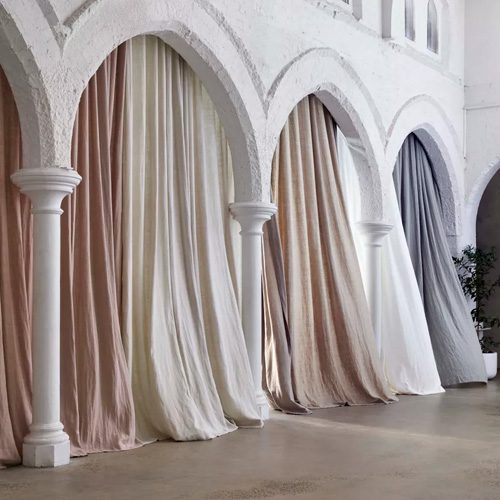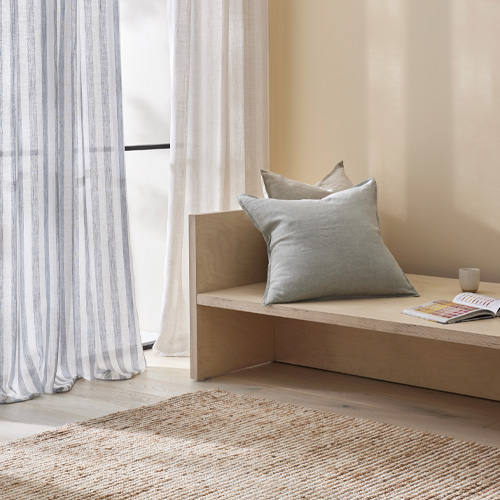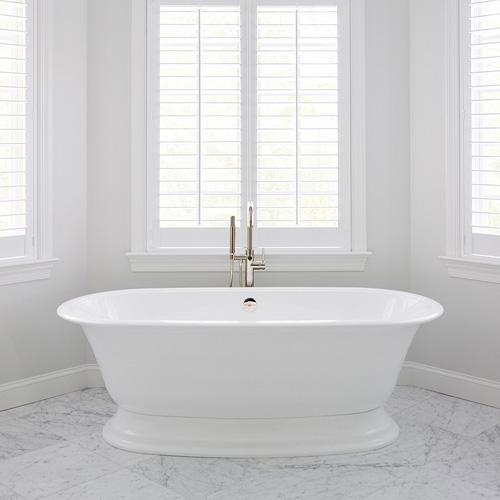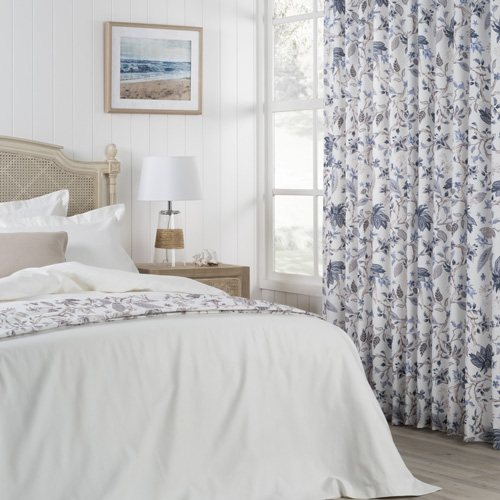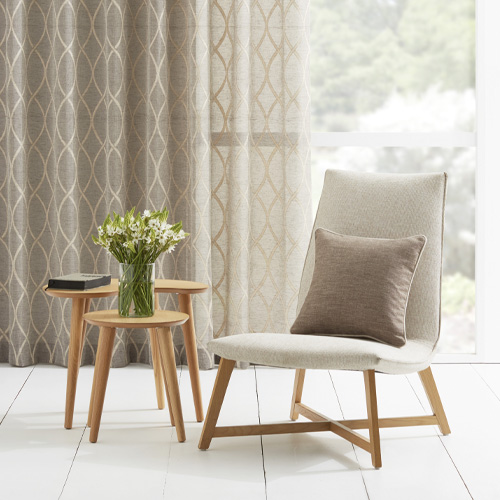Custom-made curtains can create a personalised sense of ‘home’ in any room. Creating such a stunning space doesn’t happen by accident however. To create that embrace – the sort that uplifts, stirs and soothes – intentional design is needed. In this article we will consider what goals are worth pursuing and explain specific design options. With a wide selection of colours, styles and materials available, careful planning is strongly recommended.
Some Guiding Principles in Custom Curtain Design
Interior design is guided by both functional and aesthetic goals. It’s easy to get the mix wrong, so it helps to break this down further. When selecting your custom-curtains, it’s wise to pursue the optimal combination of:
- Light,
- Temperature,
- Privacy,
- Mood, and
- Aesthetics (or beauty).
In each room and sometimes in different places within a room, you should decide what is important to you. Your choices will shape the results you attain.
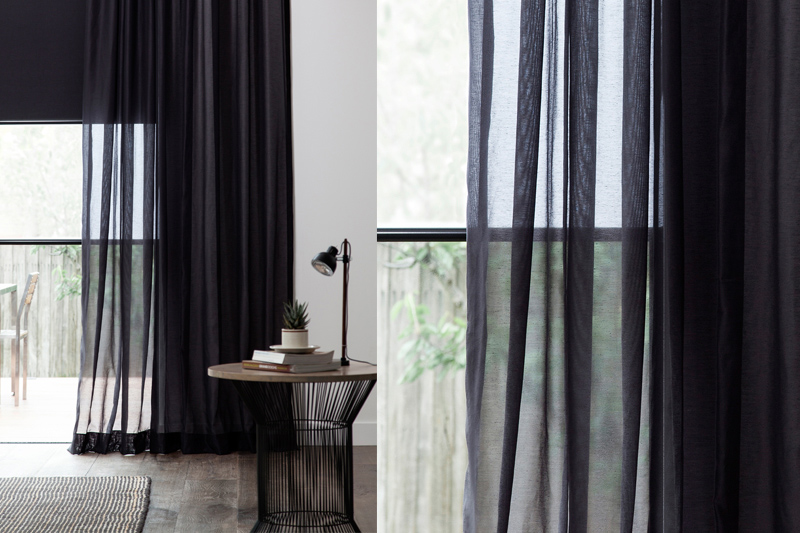
Functionality
It might sound obvious, but it’s important to remember functionality; there are things you want your curtains to do and it is wise to have these clearly in mind at all times.
How do you decide your priorities? Consider your goals in each location, with the control of light, temperature and privacy as central functional considerations. For example:
- Bedrooms that receive direct sunlight will stay cooler if you choose curtain fabric with sunblock capacity. This is especially so in rooms facing westward and even more so where sleep and evening relaxation are a goal.
A living area or kitchen is often best served by sheer curtains. These allow a freer movement of air and more abundant light flow. This way, a light and opulent feel can be achieved at the same time as daytime privacy is maintained. - It’s a question of practical priorities.
Achieving Uniformity in Beauty and Mood
Closely associated to function, yet deserving of its own mention, is the topic of uniformity. It is not unusual to seek uniformity of style and fabric across multiple rooms. This is a worthy goal, but depending on your home and priorities, it can bring significant challenge. Curtains don’t need to be the same to create cohesion and balance across your home, but there are strategic decisions to be made. Done well, complementarity across fabrics, styles and colours can make a startling contribution to the aesthetics and mood of a home.
We are here of course to empower your choices in this area.
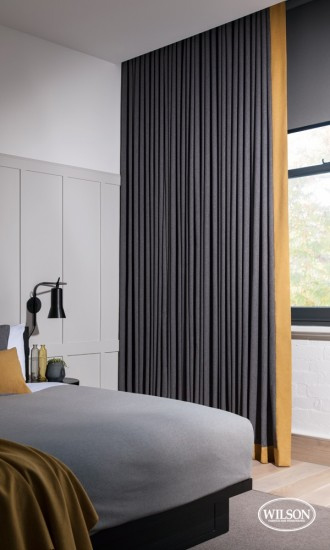 Selecting Your Curtain Heading
Selecting Your Curtain Heading
The way your curtain is sewn at the top is referred to as its “heading style”. This stitching has a direct implication on the final design, particularly in regards to how the fabric falls and how it stacks when drawn aside. A minimalist heading style can help you achieve a streamlined and structured fall in the fabric; this is typically the goal in modern curtain design.
The S-Fold and Inverted Pleat are a modern-minimalist style. More traditional header styles, which are more decorative and detailed, include Pinch, Double and Triple-Pleat.
S-Fold Curtains
These curtains are a symmetrical and streamlined alternative for those who would rather not use pleated curtain headings. It is the latest trend in curtain styles and delivers a uniform gentle fold. It is perfect for curtains of sheer fabric, as it creates the full bodied voluminous look of a soft continuous wave.
S-Fold curtains are best hung on a special carrier dedicated to this style of curtain. As a result of extra carrier bulk, these curtains do require additional stacking space. When calculating your required track length we recommend adding 20 to 30% to the width of your window. This will enable the fabric to hang free from the glass and enable maximum light inflow.
Inverted Pleat Curtains
The Inverted Pleat curtain (or Inverted Box-Pleat) is ideal for streamlined and modern interiors. It is a simple and structured heading style created when two folds of fabric are folded towards each other. A finely tailored look, these neatly inverted pleats are designed to sit flat under the rod. This makes them an ideal choice when your curtain is to remain closed most of the time. If you intend to open Inverted Pleat curtains frequently, it’s good to remember that this type of flat pleat will resist tight stacking.
Pencil Pleat Curtains
Pencil Pleat curtains are perhaps one of the most popular heading styles. Created by gathering cords across the top of the curtain tape, these deep and pencil thin pleats create a natural and attractive drapery. They can complement traditional, modern and even casual settings. They are an extremely adaptable curtain that works in both printed and plain fabric form, as well as both sheer and unlined styles. They are ideal for use in living areas and cosy bedrooms.
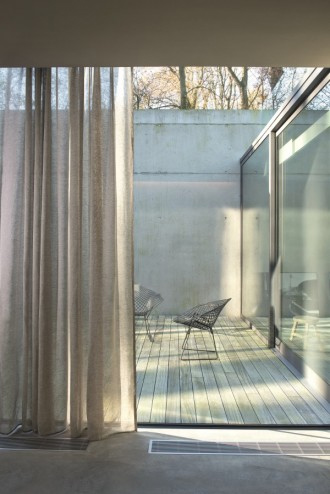 Pinch, Double or Triple Pleat Curtains
Pinch, Double or Triple Pleat Curtains
Pinch pleat curtains, sometimes known as a French pleat, come in a variety of types. Each one creates a different look and feel, so they are a very versatile option. The pleat draws the eye upward and contributes to a sense of increased space within the room. They also look great on both curtain rods and poles. Typically, these curtains are used where a more formal look is desired.
Choosing Your Fabric and Interlining
Even with all other considerations taken into account, perhaps no aspect of curtaining will influence your results more than the fabric you choose. When we began this article we considered the differing functional needs of a west-facing bedroom and a living area. In both examples, fabric was a significant element in the decision making process.
Selecting fabric correctly will make or break your interior design intentions. For example, using a silk fabric, or another with silky sheen, can create a luxury and formality that is hard to achieve by other means. If a more relaxed look is what you’re after, then linen curtains that puddle on the floor two or three centimetres can produce great results. If you are seeking both privacy and light, you can combine sheer curtains with blackout curtains.
Interlining is another fabric issue worth understanding. This blanket-like fabric is sandwiched between the lining and the face fabric. It can help a curtain look voluminous, luxurious and cause it to drape in a more elegant fashion. The increased fullness can also provide some insulation benefit if you live in a colder area. Finally, interlining is a definite inclusion if you are pursuing a classical style.
If you get the feeling we’re encouraging you to be deliberate in your choices, you’re correct! Get it right and you will reap the benefits of comfort, functionality and beauty for (potentially) a very long time.
Bringing an End to Custom-Curtain Confusion
We began this article by introducing you to goals of light, temperature, privacy, mood and aesthetic appeal. We also explained aspects of function, as well as the benefits of aesthetic and mood uniformity. Launching into specifics, we then critiqued a variety of heading and curtain fabric options. Our goal wasn’t to overwhelm, but if that happened, we understand. That’s why we need to specialise; there is a lot to think about, so considering the impact this investment will have on your home, we encourage a deliberate, systematic approach and we’re here to help and guide.
Custom-made curtains, well planned, created and installed, can deliver truly overwhelming pleasure. Entering a room that embraces you with a sense of ‘home’ is a feeling that’s difficult to describe. It’s also a feeling rarely experienced by accident. Stella Curtains & Blinds have the experience, expertise and resources to make that happen.
